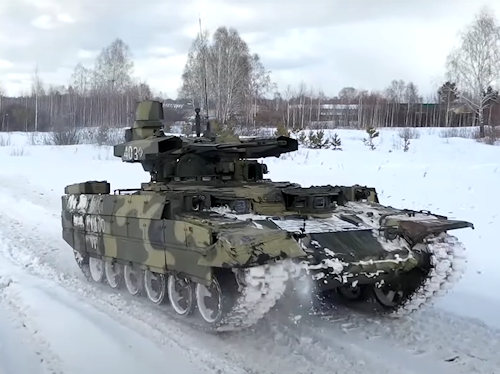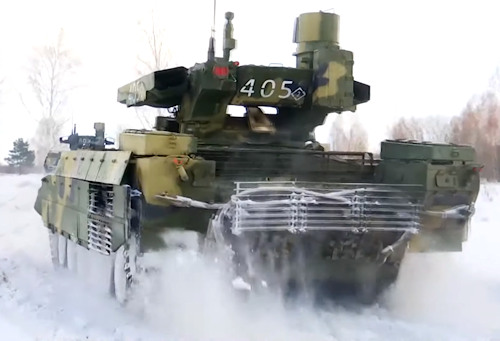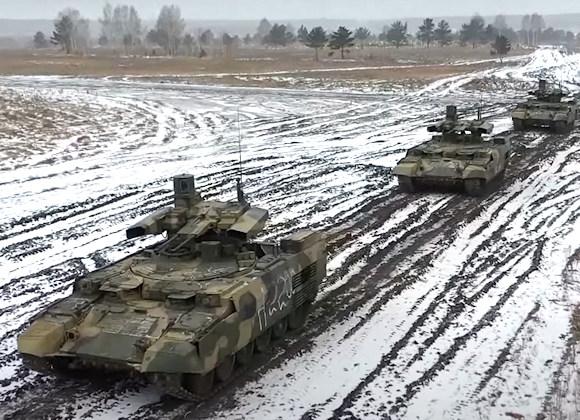The images that come to us from the Ukrainian fronts show how the future operational scenarios, described only a few years ago, are coming true. Not only has there been a return to a conventional form of conflict (after two decades of asymmetrical wars) but studies - by the Marine Corps and the US Army - indicate that battles will mainly take place in urban settings.
In the past, the fighting in inhabited centers has always been the cause of high losses, in particular for the APCs (Armored Personal Carrier) and AIFVs (Armored infantry Fighting Vehicle), caused by the insufficient level of protection. In recent unconventional conflicts, such as those in Lebanon in 2006 and in the Gaza Strip in 2008, even heavily armored MBTs (such as the Merkava Mk-4) were knocked out by the latest generation of counter-tank systems (RPG-29, Kornet etc.).
These unacceptable losses are a big problem, as it is precisely in areas that are not very permissive to the use of armored vehicles that the deployment of mechanized / armored infantry is particularly effective. A highly protected and armed vehicle was needed to "escort" the armored / mechanized units.

At present, the Russian Army can put into practice in the Ukrainian conflict the experience gained in the past two operations in Chechnya, where they were forced to employ T-72s and T-80Us in unusual roles within urban areas, paying for a high price. Therefore, the need to have a heavily armored vehicle for fire support was highlighted, from this need, at the beginning of the 2000s, the BMPT was born Terminator.
Initially, the Terminator, was based on the chassis of the MBT T-72, extensively modified in the combat compartment. It was designed to escort MBTs and AIFVs by providing fire support even in non-permissive contexts saturated with counter-tank threats.
For this purpose, the BMPT was equipped with diversified weapon systems. The version in service in the Army of the Russian Federation, on a T-90 hull, has a turret (unmanned) with two 2x42 mm 30A165 machine guns, 4 9M120 counter-tank missiles Ataka-T (NATO designation AT-9 Spiral-2), installed in pairs in 2 side launchers, 2 AG-17D automatic grenade launchers and a 7,62x54 mm machine gun.
The diversified armament allows the Terminator to effectively engage a wide range of targets on very different terrains, including, for example, footed infantry, bunkers, artillery positions, AIFV, etc.
 About 10 tons of additional protection was added to the vehicle, consisting of reactive armor elements (ERA Relikt). It is plausible that since these reactive armor elements are placed on top of the original ballistic protection, the Terminator is able to withstand fire from MBT guns and attacks conducted with counter-tank missiles, in the front and side arc. The importance attached to protection and survival skills, particularly for the crew, is also evident from the installation of remotely controlled weapon systems. It is undoubtedly a heavy vehicle (the weight in combat order exceeds 50 t), however, compared to traditional AIFVs - such as the BMP-3 but also the brand new Kurganets-25 - the BMPT has a better chance of surviving in the new theaters. operational.
About 10 tons of additional protection was added to the vehicle, consisting of reactive armor elements (ERA Relikt). It is plausible that since these reactive armor elements are placed on top of the original ballistic protection, the Terminator is able to withstand fire from MBT guns and attacks conducted with counter-tank missiles, in the front and side arc. The importance attached to protection and survival skills, particularly for the crew, is also evident from the installation of remotely controlled weapon systems. It is undoubtedly a heavy vehicle (the weight in combat order exceeds 50 t), however, compared to traditional AIFVs - such as the BMP-3 but also the brand new Kurganets-25 - the BMPT has a better chance of surviving in the new theaters. operational.
The Russians have already learned bitter lessons from the dire consequences of deploying insufficiently protected AIFVs (as happened in Grozny).
That is why when the Russian forces enter Kiev in force, they will advance the first Terminator, also given the numerous counter-tank missile systems (Javelins and NLAW) that Westerners have been providing to Ukrainians in recent months.
images: Russian Fed MoD












